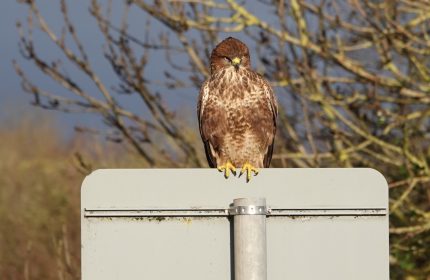5 insects that could be good news for your garden
The warm weather has not only brought on our plants, but insects also seem to be thriving.
Unless they’re a bee or a butterfly however, insects can often get landed with a bad reputation, from those pesky greenfly sucking sap and lily beetles nibbling precious lilies, to caterpillars causing chaos on cabbages.

Lily beetle
But most insects should really be welcomed with open arms, being an essential ingredient for a healthy plot, according to Andrew Salisbury, principal entomologist with the Royal Horticultural Society (RHS; rhs.org.uk).
Many are useful pollinators, help to break down and recycle dead animal and plant material or serve as predators, which helps keep other invertebrates in check, including plant pests.
So, when you’re trying to pick the bright red lily beetles off your prize blooms, or battling clouds of aphids on the stems of roses and other plants, look a bit deeper into your beds and borders for the insects which not only provide colourful interest but may also benefit your garden.
Here, Salisbury lists five eye-catching garden insects to look out for…
1. Elephant hawk moth caterpillar (Deilephila elpenor)

Elephant hawk moth caterpillar
The large, 8cm-long, brown, snake-mimicking caterpillars of this bright pink moth can be found on fuchsias during summer.

Elephant hawk moth
When disturbed, the caterpillars can retract their heads into their bodies, and when extended again are said to resemble an elephant’s trunk. They feed on wildflower hosts in the wild, such as rosebay willowherb, and it’s unusual for them to seriously damage garden plants.
2. Rose chafer (Cetonia aurata)

Rose chafer beetle
One of Britain’s shiniest beetles, this 2cm-long metallic green beetle can sometimes be found feeding in flowers, where they may occasionally damage a few petals. Gardeners may feel it’s a price worth paying however, as the 2cm long C-shaped larvae feed on decomposing plant material and are often found in compost heaps, where they help ready the compost.
Some species of chafer beetle are pests because their larvae feed on the roots of plants. But the rose chafer is relatively harmless, as its larvae feed on decaying organic matter, rather than living plant material.
3. European Hornet (Vespa crabro)

European hornet
Sometimes alarming because of their size and slow, buzzing flight, the UK’s largest native wasp sees queens reaching up to 3cm in length. Although it can cause concern, it is less aggressive than other species of social wasp and is a useful predator of insects including other wasps and flies. It should not be confused with the smaller, darker, invasive Asian hornet which, if seen, should be reported. See nonnativespecies.org for more information.
4. Large red damselfly (Pyrrhosoma nymphula)

A large red damselfly
Ferocious aerial predators of the insect world, this is one of several species of dragonfly and damselfly that can breed in garden ponds, and will visit pond-less gardens. The adults use their large eyes to spot insect prey and hunt it down in flight. The nymphs (immature stage damselflies) live in ponds, where they feed on other aquatic animals.
Damselflies promote a healthy balance in gardens and garden ponds, as they help reduce the number of other aquatic larvae, such as mosquitoes. Adults will also predate on what may be considered nuisance insects.
5. Hornet mimic hoverfly (Volucella zonaria)

Female hoverfly
A pollinator and fly, the UK’s largest hoverfly mimics the European hornet to avoid being eaten. It is more than 1.5cm-long, has no sting and can be found visiting flowers during the summer. The 2cm-long larvae (maggots) feed on waste at the bottom of social wasp nests.
The Press Association
Latest posts by The Press Association (see all)
- Maple Cinnamon Granola - January 8, 2025
- 8 things your feet can tell you about your health - January 8, 2025
- 9 ways to look after your emotional health better in 2025 - January 7, 2025
- EastEnders fans to vote on storyline for the first time in 40th anniversary week - January 7, 2025
- Aldi beats rival Lidl as cheapest supermarket of 2024 - January 6, 2025





















